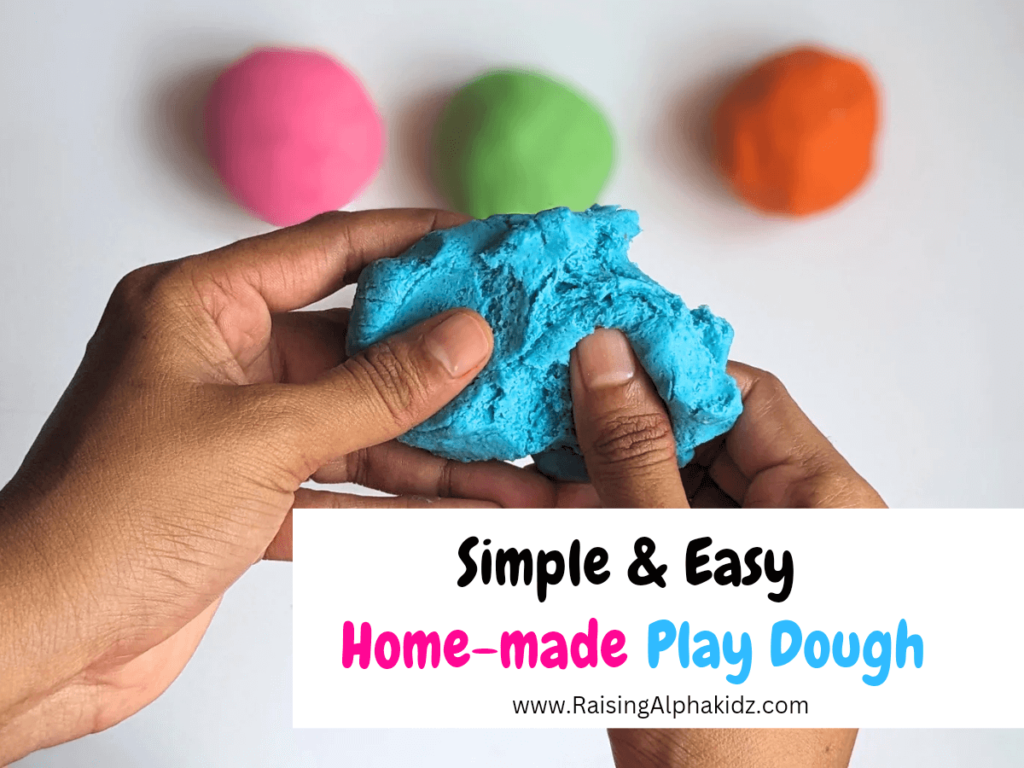Welcome to our guide on making easy and simple homemade no cook play dough recipe! Whether you’re a parent looking for a fun activity to do with your kids or a teacher seeking a creative tool for the classroom, homemade play dough is a awesome play tool to engage the kids. Here, I will have you through a simple play dough recipe made using common kitchen ingredients, without the need for cream of tartar. Let’s get ready to have a messy and creative play time by diving into the process of making soft and smooth play dough recipe at home.
What Is Play Dough
Before going into the making process, let’s know briefly about what Play dough actually is! Play dough is a play material which is a soft and pliable substance primarily used by children for creative play and sensory exploration. For centuries, child educators recommends it for improving sensory and fine motor skills of children.
Essential Items
There are many ways to make a homemade play dough. People use cream of tartar for making play dough at home. But here we are going to make edible homemade play dough recipe without using cream of tartar!
Also, play dough can me made by heating the play dough ingredients which lasts longer. But, here I’m going to share no cook edible Play dough recipe that ease your process of making play dough at home.
To make our homemade no cook homemade play dough recipe, we will need 4 ingredients!
- All-purpose flour – 1 cup
- Salt – 1/2 cup
- Water – 1/2 cup
- Food coloring
- Whisk
- Spatula
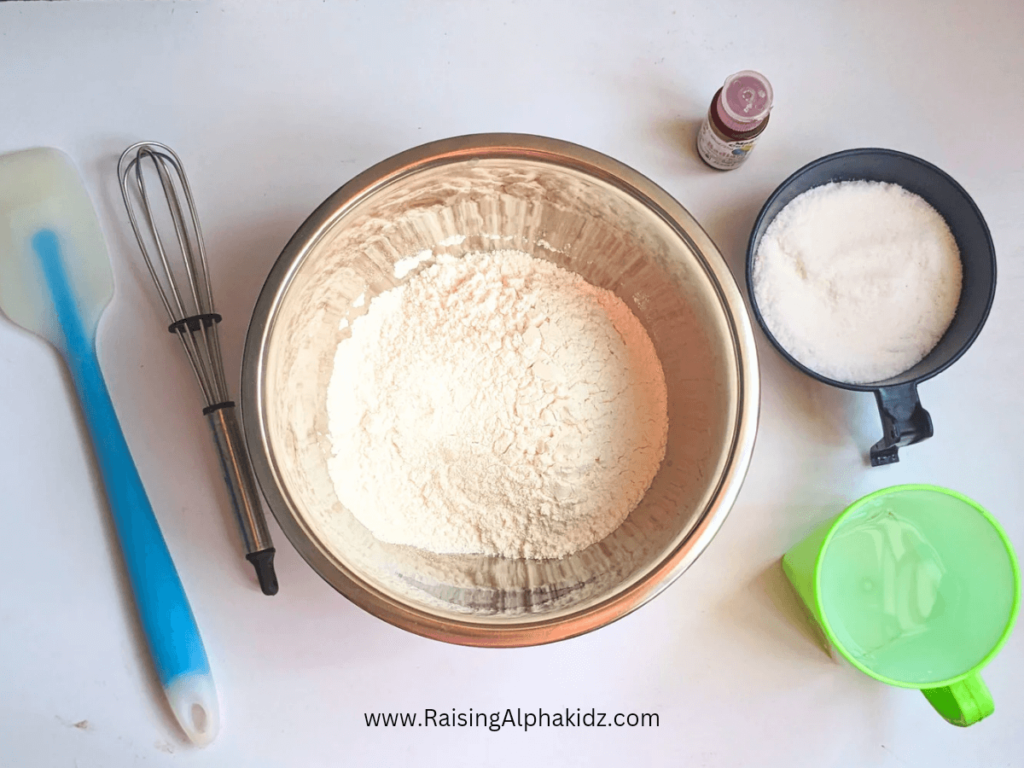
How to Make Homemade No Cook Play Dough
1) In a clean bowl, combine 1 cup of all-purpose flour and 1/2 cup of salt. Use a whisk to mix the dry ingredients thoroughly.
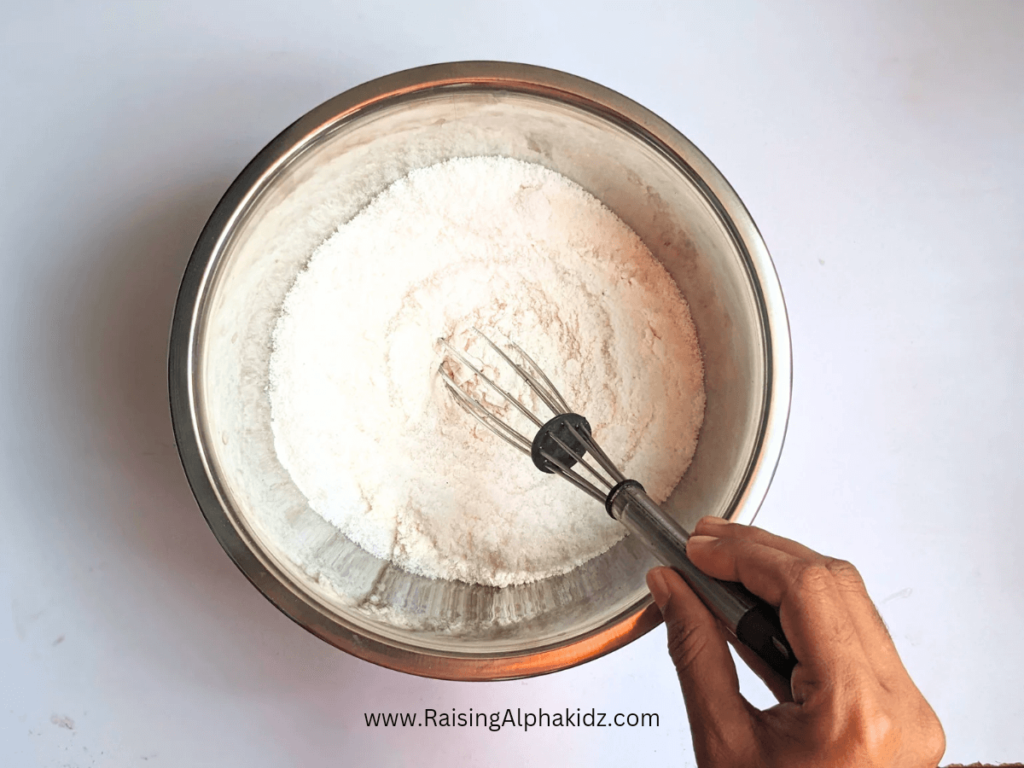
2) Gradually add water to the mixture, mix continuously using spatula until you achieve a dough-like consistency.
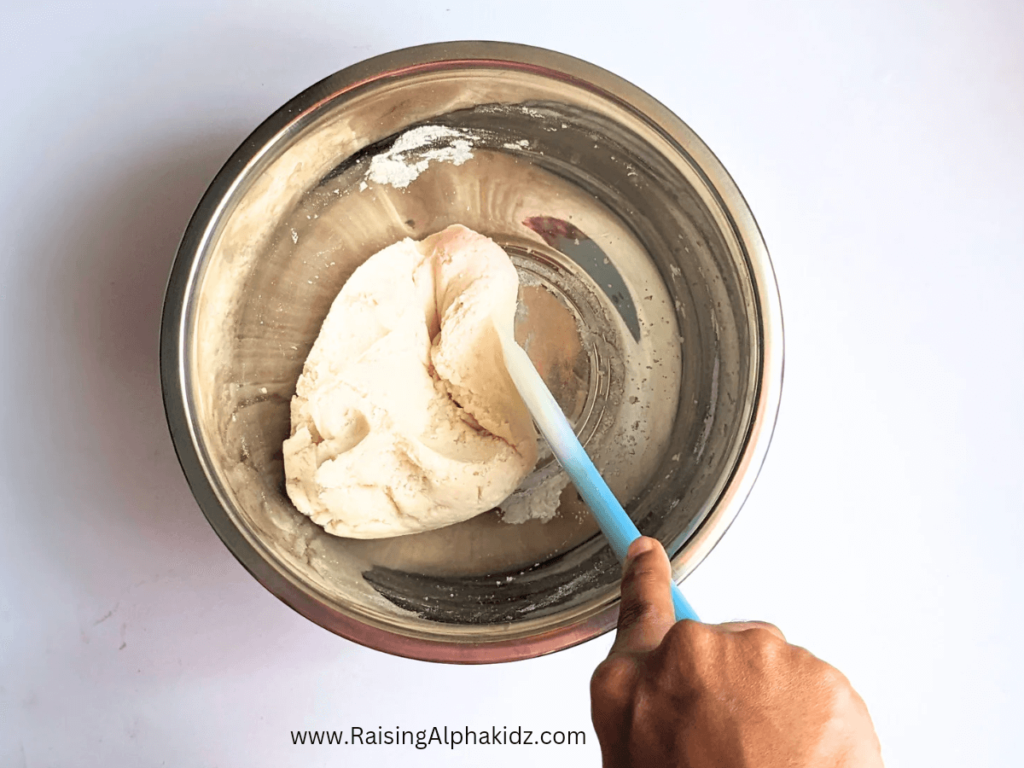
3) Knead it with your hands until the dough get smooth and soft.
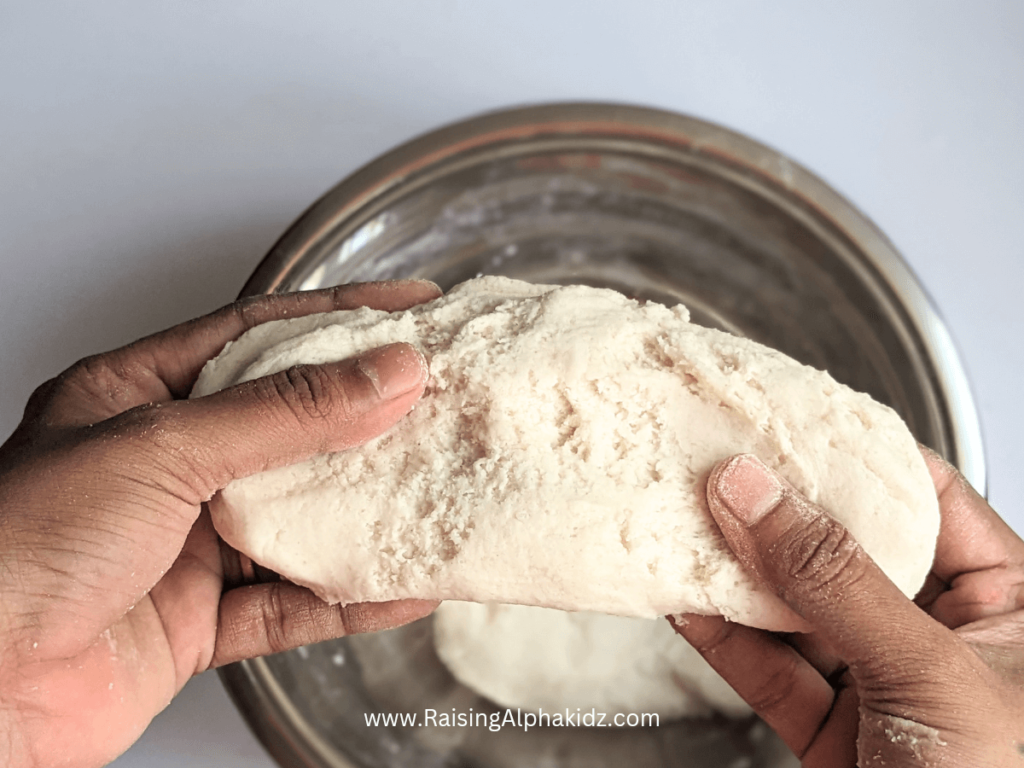
4) Divide the dough into small portions corresponding to the number of colors you’d like to make.
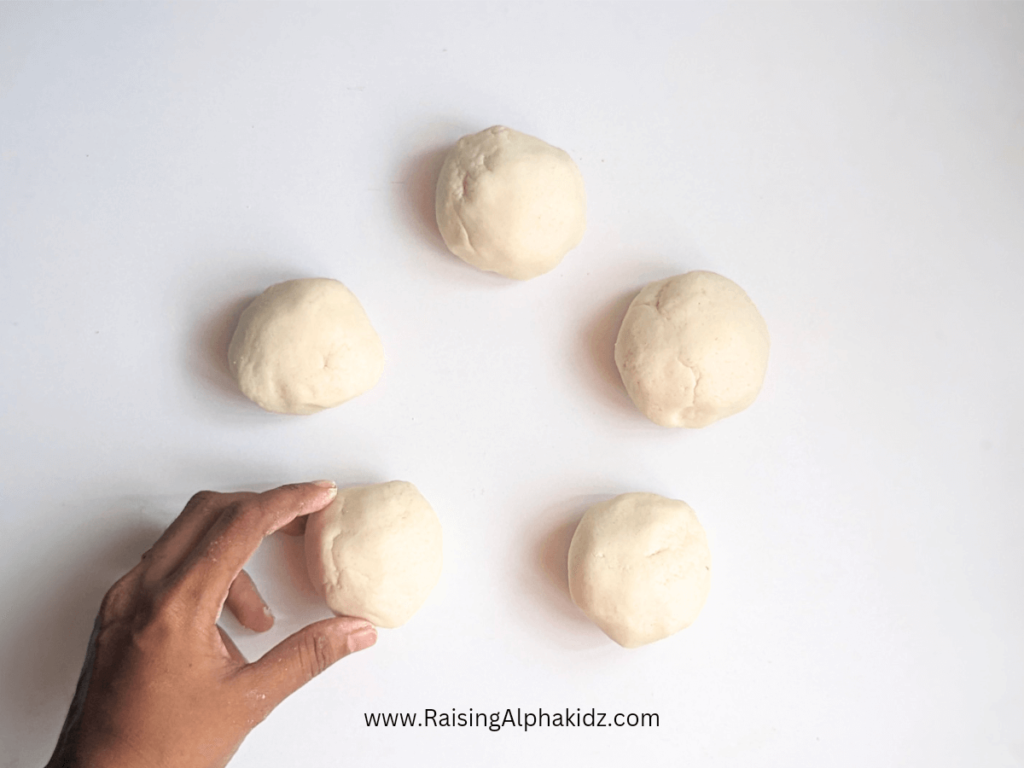
5) Add a few drops of different food coloring to each portion.
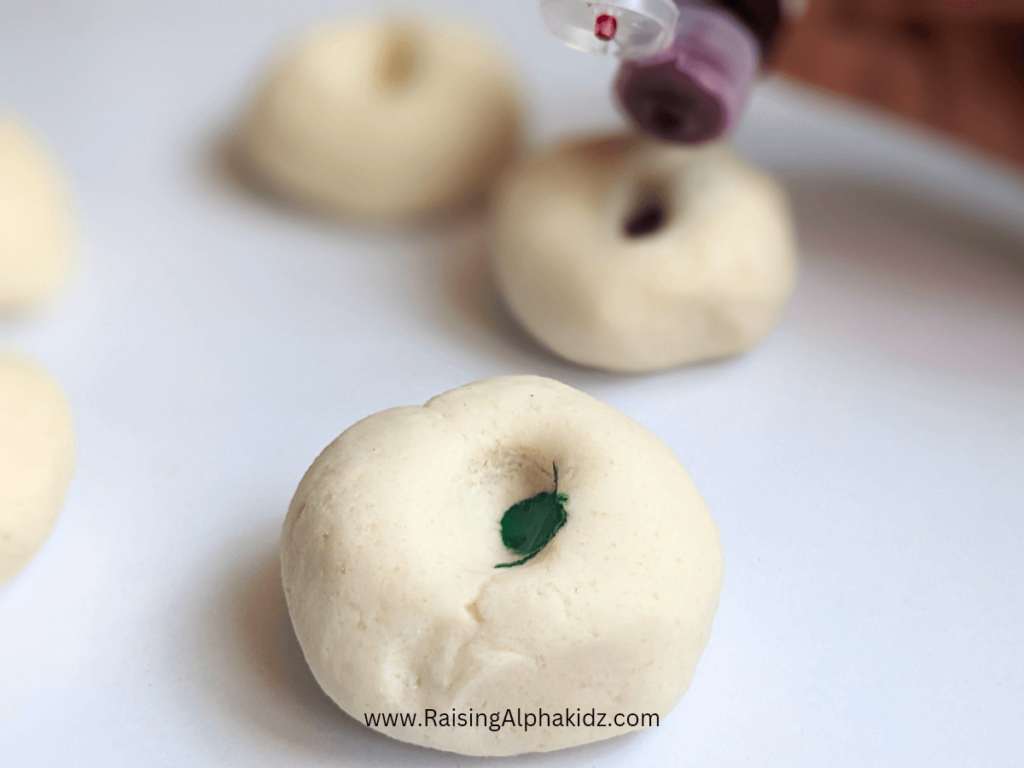
6) Mix and knead the play dough with your hands until the color gets evenly distributed.
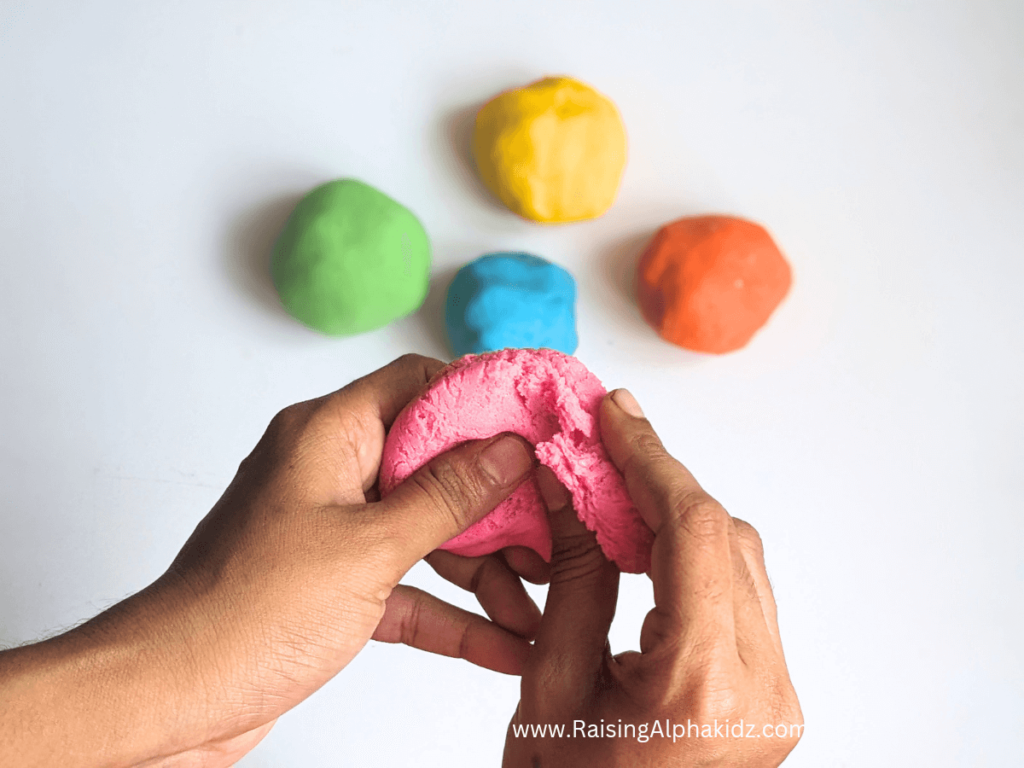
7) Your homemade no cook play dough is now ready to be enjoyed by your little ones!
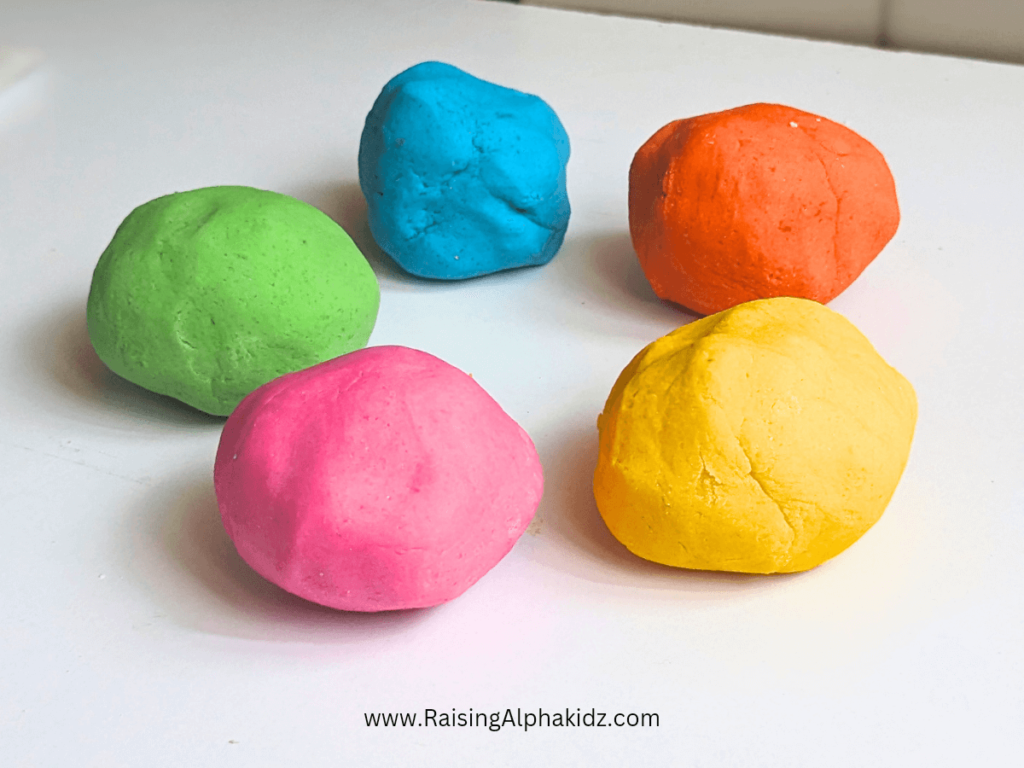
How To Store Homemade Play Dough
Storing homemade play dough properly helps maintain its freshness and can lasts longer. Here’s how to do it:
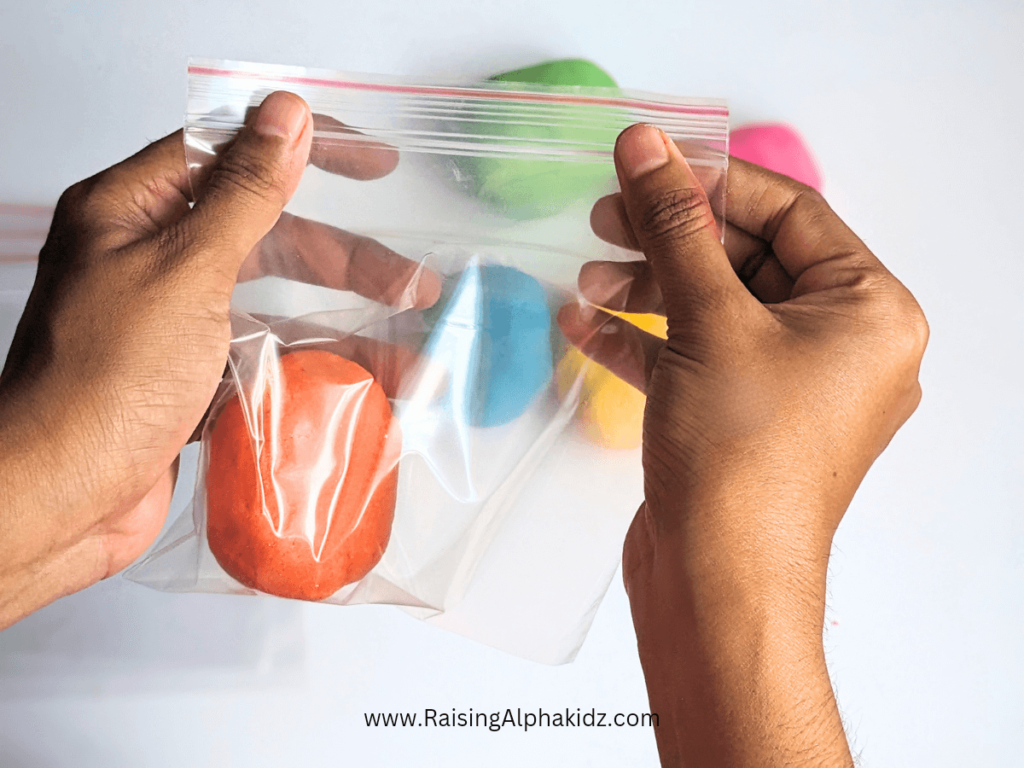
- Ziplock Pouch/ Airtight Containers: Transfer the play dough into ziplock pouch or airtight containers to prevent it from drying out and becoming crumbly.
- Labeling: Label each container or bag with the date of preparation to keep track of its freshness.
- Refrigeration: Store the play dough in the refrigerator when not in use. This helps extend its shelf life and prevents mold growth.
- Avoid Moisture: Make sure the play dough is completely dry before storing it to prevent moisture buildup, which can lead to mold.
- Separation: If you’ve made multiple colors of play dough, store them separately to prevent colors from mixing and becoming muddy.
How Long Can Homemade No Cook Play Dough Last?
When stored in an airtight container in the refrigerator, homemade play dough can last for up to 2 months.
Is This Play Dough Edible?
Yes, since this play dough recipe uses edible ingredients, it is safe for children to play with and even taste (although it might not taste very good!).
What Age is Safe for Kids to Play with Play Dough?
Generally, play dough is safe for children ages two and up. However, always supervise younger children to ensure they don’t ingest any small pieces.
Play Dough Activities
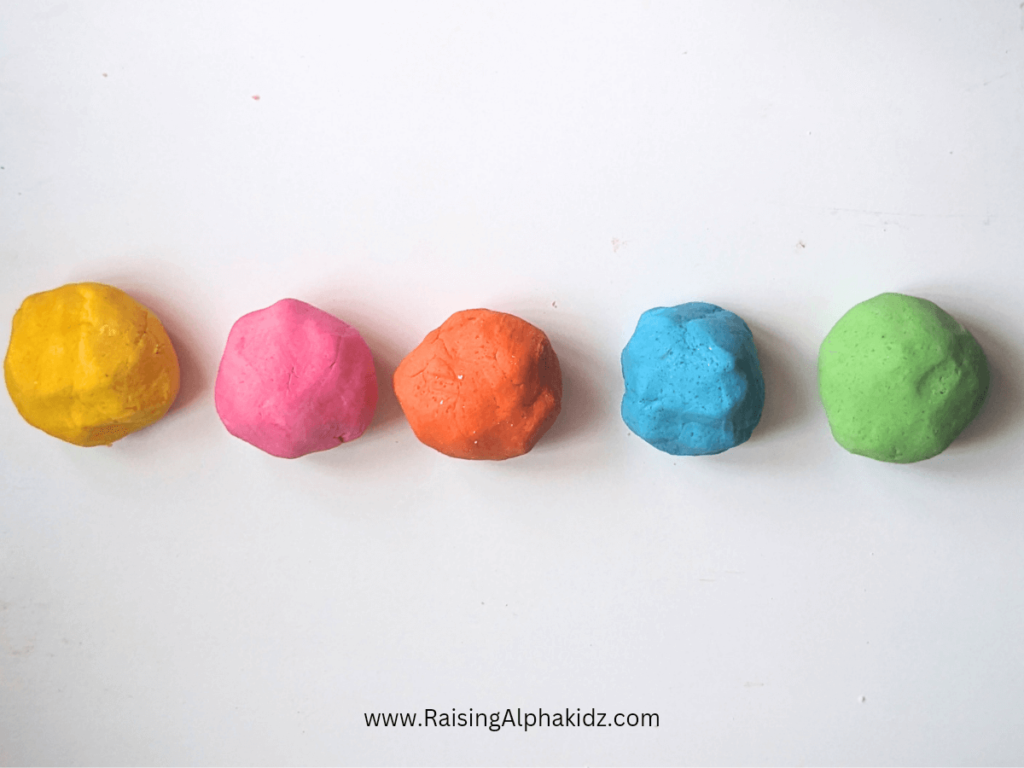
1). Create a play dough sensory bin filled with various items for tactile exploration. Add items like feathers, beads, buttons, or small toys to enhance sensory experiences and spark imaginative play.
2). Encourage imaginative play by sculpting Hedgehog, flowers, Snake or anything else your child can dream up. Challenge them to create a miniature world using their play dough creations.
3). Use a play dough mat with printed letters, numbers, or shapes to enhance learning while playing. Practice letter recognition, counting, or shape sorting as you mold the dough.
4). Explore other play dough activities such as making patterns, rolling shapes, or practicing fine motor skills. Use cookie cutters, rolling pins, and plastic knives to manipulate the dough and develop hand-eye coordination.
5) Take play dough outdoors for a sensory nature hunt. Encourage children to collect natural materials like leaves, sticks, and flowers to incorporate into their play dough.
6). Experiment with different textures by adding ingredients like sand, rice, or cornmeal to the play dough mixture. Create sensory-rich doughs that stimulate touch and encourage exploration.
7). Use play dough as a tool for storytelling. Mold characters, props, and scenery to bring stories to life, or encourage children to create their own narrative Stories using their play dough creations as inspiration.
8). Incorporate learning concepts like color mixing, measurement, and spatial awareness into play dough activities. Let children explore mathematical concepts through hands-on play.
Related: 10 Educational Play Dough Activities To Try Out With Pre-schoolers
Suprising Benefits of Play dough Activities

- Children can unleash their imagination by sculpting various shapes, figures, and objects using play dough.
- Shaping play dough helps strengthen the muscles in children’s hands and fingers, enhancing their fine motor skills.
- Activities like rolling, pinching, and squeezing the dough require precise movements, contributing to better hand-eye coordination.
- Children can explore different textures, colors, and even scents by kneading and manipulating the dough, promoting sensory awareness and cognitive development.
- Children can practice counting, sorting, and patterning with dough balls or shapes, while play dough mats with printed letters, numbers, or shapes offer opportunities for early literacy and numeracy learning.
- Playing with play dough can have a calming effect on children, providing a sensory outlet for emotional expression and regulation.
- The repetitive and soothing motions involved in kneading and shaping dough can help children relax and focus, making it a valuable tool for managing emotions.
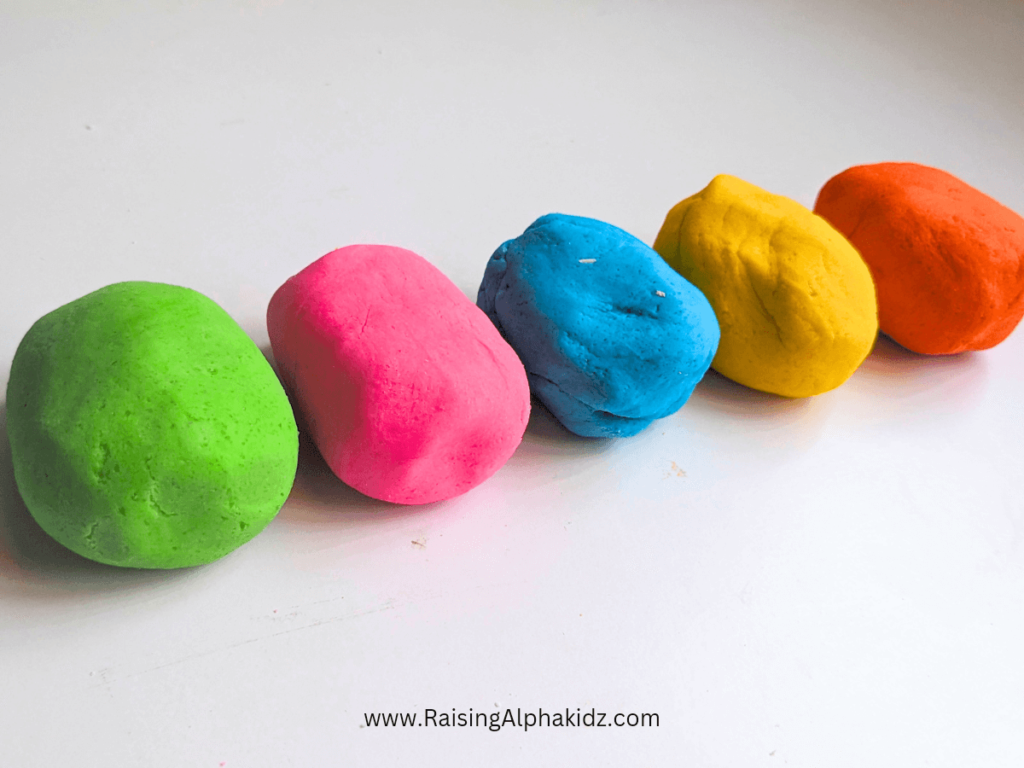
Making homemade play dough is not only a fun and engaging activity but also a great way to foster creativity and learning in children. With just a few simple ingredients, you can create endless hours of entertainment for your little ones. So, roll up your sleeves, gather your materials, and let the fun begin with this no-cook, without-cream-of-tartar, edible play dough recipe!
More DIY Play Ideas
- DIY Math Pizza with FREE Printables
- DIY Popscile Stick Puzzle With FREE Printables
- Feed the Monster Alphabets Activity
- DIY Popscile Stick Alphabets Activity
- Try out DIY Sensory Bin Ideas
- Learn about Kids Art Ideas

